 The 2019 novel coronavirus has been renamed COVID-19 by the World Health Organization. It continues to be highly contagious and is spreading steadily throughout the world. Millions are fearful and presumably you might be too. The best way to fight this viral infection though is not to be afraid of it but to be prepared for it. Believe it or not, a plant-based lifestyle is an excellent way to brace yourself for this disease. While there is no vaccine to counteract the virus, a plant-based lifestyle is the perfect booster for the immune system which will help your body fight like a well-trained combat machine.
The 2019 novel coronavirus has been renamed COVID-19 by the World Health Organization. It continues to be highly contagious and is spreading steadily throughout the world. Millions are fearful and presumably you might be too. The best way to fight this viral infection though is not to be afraid of it but to be prepared for it. Believe it or not, a plant-based lifestyle is an excellent way to brace yourself for this disease. While there is no vaccine to counteract the virus, a plant-based lifestyle is the perfect booster for the immune system which will help your body fight like a well-trained combat machine.
Notice I am talking about more than just a diet here. When it comes to a well-greased, efficient and powerful immune system that can win the virus war for you, we have to address more than diet. We have to address the entire lifestyle. Let’s take an inventory of your lifestyle right now and see if it’s one that is keeping your immune system in tip top shape.
- Are you going to bed by 10PM and getting at least seven hours of sleep?
- Is your stress level under control and are you taking on only what you can reasonably handle?
- Have you kicked your tobacco habit in the butt?
- Is your body in motion regularly and are you getting at least 20 minutes of exercise 3 to 4 times a week?
- Have you removed major toxins from your diet which include meat, dairy and processed sugar?
- Are you getting 2 – 3 servings of green vegetables into your body every day?
So how’d you do? If you said no to all or most of the questions it’s likely your immune system is weak and has been for a while. There’s no time like the present to start making a change. Hey, it makes no sense to worry and fret over COVID-19 and not do anything to get ready. Look at the list above and decide what aspect of your lifestyle you can start improving today. Each journey begins with one step. So get up and take a step. You’ll be surprised how far you’ll get.
To the best of health for you and your family,
Dr. Kathy
Reference
https://www.cdc.gov/media/releases/2020/s0226-Covid-19-spread.html
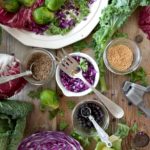

 Almost everyone can agree it’s important to look at what, how and why we’re eating. Often times however we overlook the most crucial element and that’s the issue of “what’s eating us”. Stress is an important factor that impacts our health and well-being. The way our modern society is designed it can be pretty easy to get stressed out. Things that contribute to stress include
Almost everyone can agree it’s important to look at what, how and why we’re eating. Often times however we overlook the most crucial element and that’s the issue of “what’s eating us”. Stress is an important factor that impacts our health and well-being. The way our modern society is designed it can be pretty easy to get stressed out. Things that contribute to stress include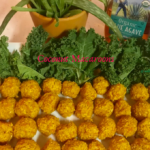
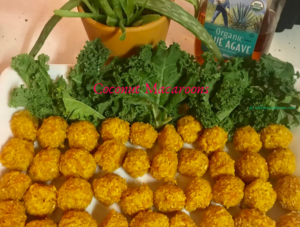 Here’s a nice dessert to take to that holiday party this season. These coconut macaroons are definitely a hit. Once you place them on the serving table they’ll be gone literally in seconds. This sweet treat has no processed sugar, no trans fats and no artificial additives. They are high in fiber, and are even loaded with vitamin A from the carrots (but nobody knows they have carrots unless you tell them)
Here’s a nice dessert to take to that holiday party this season. These coconut macaroons are definitely a hit. Once you place them on the serving table they’ll be gone literally in seconds. This sweet treat has no processed sugar, no trans fats and no artificial additives. They are high in fiber, and are even loaded with vitamin A from the carrots (but nobody knows they have carrots unless you tell them)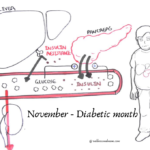
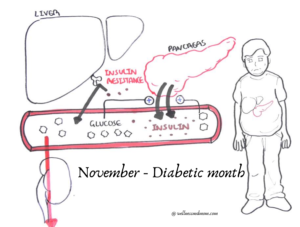 November is national diabetes awareness month. When we realize the magnitude of the damage being done by this one disease it really is important to make everyone aware of how to avoid and reverse this disease. Diabetes affects over 29 million Americans and is a major problem in many other countries that have adopted a Western diet and lifestyle.
November is national diabetes awareness month. When we realize the magnitude of the damage being done by this one disease it really is important to make everyone aware of how to avoid and reverse this disease. Diabetes affects over 29 million Americans and is a major problem in many other countries that have adopted a Western diet and lifestyle.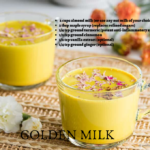
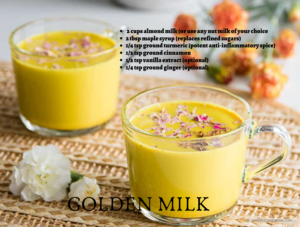 A patient recently told me about golden milk. Golden milk ? I had never heard of that one before. I was curious and eager to try it out. So I searched out different recipes and finally came up with the combination of ingredients that I thought were the most healthful. We made it last night and it was totally yummilicious and awesome. Everyone loved it and the kids kept coming back for more! It’s a perfect latte because it has the anti-inflammatory spices of turmeric and ginger. The maple syrup as a sweetener is a far better option than white sugar. Using a nut milk instead of cows milk is much better for fighting inflammation and avoids all the saturated fat, mucus, antibiotics and casein in cows milk which is the last thing anybody needs.
A patient recently told me about golden milk. Golden milk ? I had never heard of that one before. I was curious and eager to try it out. So I searched out different recipes and finally came up with the combination of ingredients that I thought were the most healthful. We made it last night and it was totally yummilicious and awesome. Everyone loved it and the kids kept coming back for more! It’s a perfect latte because it has the anti-inflammatory spices of turmeric and ginger. The maple syrup as a sweetener is a far better option than white sugar. Using a nut milk instead of cows milk is much better for fighting inflammation and avoids all the saturated fat, mucus, antibiotics and casein in cows milk which is the last thing anybody needs.
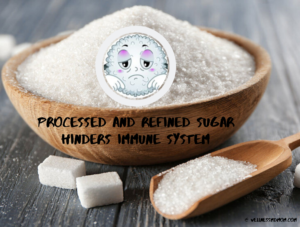 In the last blog titled “fighting back the colds and flu” I pointed out some simple ways to help your immune system win for you. The immune system is key in winning the battle against those colds and flu this season. Those white blood cells are primed and eager to fight the viral invaders. As much as they want to defend us from viruses, bacteria, fungus and even cancer cells they can’t do a whole lot if they are been poisoned. The most common poison these guys have to battle on a continual basis is one that seems so innocent and sweet. Sweet with a capital S. Processed sugar is a potent and effective way to cripple our white blood cell fighting power. Studies have demonstrated that when white blood cells are exposed to elevated levels of sugar they become sluggish and move slowly. “By drinking 1 Liter bottle of soda or by eating 100 gram sugar (about two cans of soda), the reactivity of WBCs reduces 40%. This can make our immune system disable for 4 or 5 hours.” (1)
In the last blog titled “fighting back the colds and flu” I pointed out some simple ways to help your immune system win for you. The immune system is key in winning the battle against those colds and flu this season. Those white blood cells are primed and eager to fight the viral invaders. As much as they want to defend us from viruses, bacteria, fungus and even cancer cells they can’t do a whole lot if they are been poisoned. The most common poison these guys have to battle on a continual basis is one that seems so innocent and sweet. Sweet with a capital S. Processed sugar is a potent and effective way to cripple our white blood cell fighting power. Studies have demonstrated that when white blood cells are exposed to elevated levels of sugar they become sluggish and move slowly. “By drinking 1 Liter bottle of soda or by eating 100 gram sugar (about two cans of soda), the reactivity of WBCs reduces 40%. This can make our immune system disable for 4 or 5 hours.” (1)
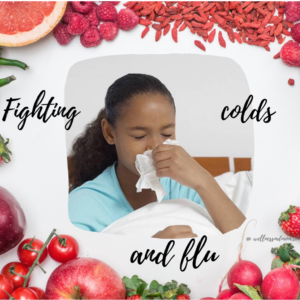 The weather is changing and with the cold climate comes those dreadful colds and flu. You already hear your kids sniffling, sneezing and coughing and you are bracing for your turn. Those bugs seem to be no respecter of persons as they diligently make their rounds till everyone is whimpering at their mercy. Is it even possible to put up a fight against those nasty viruses? It most certainly is! Understanding your enemy and equipping your own defense system is one way to prepare for the impending battle. The battle which you hope to win.
The weather is changing and with the cold climate comes those dreadful colds and flu. You already hear your kids sniffling, sneezing and coughing and you are bracing for your turn. Those bugs seem to be no respecter of persons as they diligently make their rounds till everyone is whimpering at their mercy. Is it even possible to put up a fight against those nasty viruses? It most certainly is! Understanding your enemy and equipping your own defense system is one way to prepare for the impending battle. The battle which you hope to win.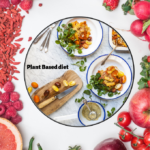
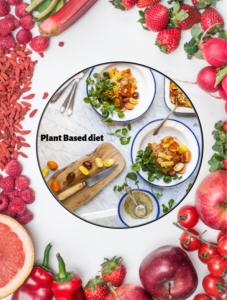 There are so many diets out there it can easily become overwhelming. Sometimes my patients mention new diets to me that I have never even heard off. New ones just keep popping up. I’ve often toyed with the idea of creating my own diet. But what would I call it? The DKD (Dr Kathy Diet), kind of catchy. But seriously, there really isn’t a need for a new diet because the evidence is overwhelming for the absolute best diet to promote health. Any guesses? The Mediterranean diet is a popular one with fairly good evidence to support long lasting health. The emphasis is often drawn to its fish and olive oil component when actually what makes that diet so healthy is its strong emphasis on whole foods, fruits and vegetables. It also strongly encourages enjoying meals in a positive social setting with family and friends. Something that’s missing in our fast paced society.
There are so many diets out there it can easily become overwhelming. Sometimes my patients mention new diets to me that I have never even heard off. New ones just keep popping up. I’ve often toyed with the idea of creating my own diet. But what would I call it? The DKD (Dr Kathy Diet), kind of catchy. But seriously, there really isn’t a need for a new diet because the evidence is overwhelming for the absolute best diet to promote health. Any guesses? The Mediterranean diet is a popular one with fairly good evidence to support long lasting health. The emphasis is often drawn to its fish and olive oil component when actually what makes that diet so healthy is its strong emphasis on whole foods, fruits and vegetables. It also strongly encourages enjoying meals in a positive social setting with family and friends. Something that’s missing in our fast paced society.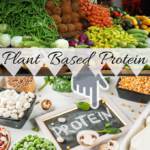
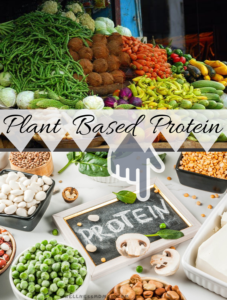 When I advise folks to transition to an all plant diet the biggest concern they voice is about PROTEIN? Where am I going to get my protein? The fact is we have all been taught that the best source of protein is from animal meat. This myth has been put on trial and busted over and over again but the memo was never made public. Really … I wonder why?
When I advise folks to transition to an all plant diet the biggest concern they voice is about PROTEIN? Where am I going to get my protein? The fact is we have all been taught that the best source of protein is from animal meat. This myth has been put on trial and busted over and over again but the memo was never made public. Really … I wonder why?
